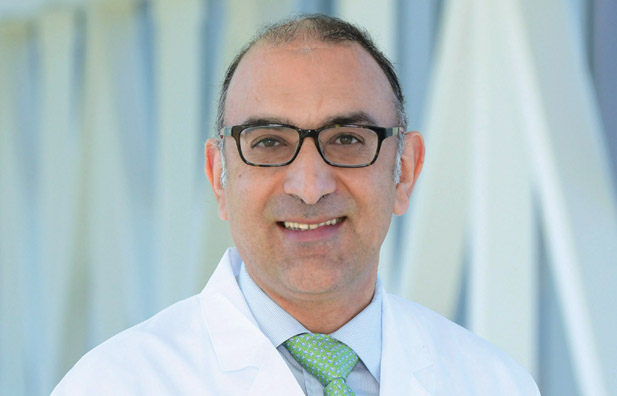OU Health Sciences Center Study Detects ‘Silent’ Atrial Fibrillation in American Indians Using Smartphone-Based ECG
A recently completed study by researchers at the University of Oklahoma Health Sciences Center demonstrated the effectiveness of using a smartphone-based electrocardiogram (ECG) to detect atrial fibrillation among American Indians, a population with increased risk factors for the condition.
Atrial fibrillation, which causes an irregular heartbeat, can lead to stroke, blood clots and heart failure. About half of atrial fibrillation cases are asymptomatic, and 40% to 50% of people with the condition don’t know they have it. For some people, having a stroke is the first time they know they have atrial fibrillation.
The study, published in the Journal of the American Heart Association, was conducted in partnership with the Absentee Shawnee Tribal Health System. Patients age 50 and older who were coming to see their primary care provider, and did not have a prior diagnosis of atrial fibrillation, had the option to participate in the study, which ultimately enrolled 1,019 people. Upon their arrival at the clinic, study participants placed their fingers for 30 seconds on a small ECG that connected to an app.
The ECG identified 15 patients who had “silent” atrial fibrillation, meaning they had no symptoms. “That is about 1.5% of the study’s enrollment, but to put that into perspective, when we do the same type of ECG in Caucasian populations, we find 0.4% with atrial fibrillation. In the population we worked with, silent atrial fibrillation was three times higher,” said OU Health cardiologist Stavros Stavrakis, M.D., Ph.D., lead author of the study.
The study also demonstrated the importance of earlier screening for atrial fibrillation in patient populations considered high-risk. Guidelines currently recommend screening for asymptomatic atrial fibrillation beginning at age 65. However, eight of the 15 patients identified with atrial fibrillation in this study were between 50 and 65, Stavrakis said.
“We had hypothesized that because American Indians have a higher incidence of risk factors, we would find atrial fibrillation in younger ages,” he said. “We recommend that screening in American Indians start at a younger age. In addition, because American Indians are significantly underrepresented in research studies in general, we need to conduct further studies focusing on Indigenous populations.”
Stavrakis said the study participants were compared to a group of about 1,200 people in the same age range who were patients at the clinic but not enrolled in the study. In that group, doctors identified three cases of atrial fibrillation during standard screening. “Using the standard care, you find significantly fewer numbers of cases,” he said.
All patients in the study who were diagnosed with atrial fibrillation were started on blood thinners to decrease the risk of risk of stroke. However, over the course of a year, the clinic increased its overall use of blood thinners in patients not in the study but diagnosed with atrial fibrillation.
“We attribute that to raising awareness about atrial fibrillation in the clinic in general among the physicians, nursing staff and patients,” he said.
The next step for Stavrakis and his team is to conduct a larger, randomized study in which some patients are screened with the smartphone-based ECG and others are not. He envisions a future where such devices are routine in primary care clinics, or people use them at home if they are in a higher-risk population.
The study is also an important element of the OU Health Sciences Center’s ongoing partnerships with Oklahoma’s American Indian tribes. The Absentee Shawnee Tribe is a partner in the Oklahoma Clinical and Translational Science Institute, which unites non-profits, American Indian communities, public agencies and primary care providers in research addressing the poor health outcomes of Oklahomans.
“Dr. Stavrakis and his team here at the OU Health Sciences Center and Dr. Marty Lofgren and his team at the Absentee Shawnee Health System worked beautifully together. This research would not have been possible without mutual respect and clear understanding of what we were trying to accomplish and the benefits for the community. This type of partnership should be the goal of any research partnership,” said Lancer Stephens, Ph.D., member of the Kitikiti’sh tribe, Associate Core Director for the Oklahoma Shared Clinical and Translational Resources, and Associate Dean for Sovereignty, Equity, Diversity and Inclusion at the Hudson College of Public Health at the OU Health Sciences Center.












